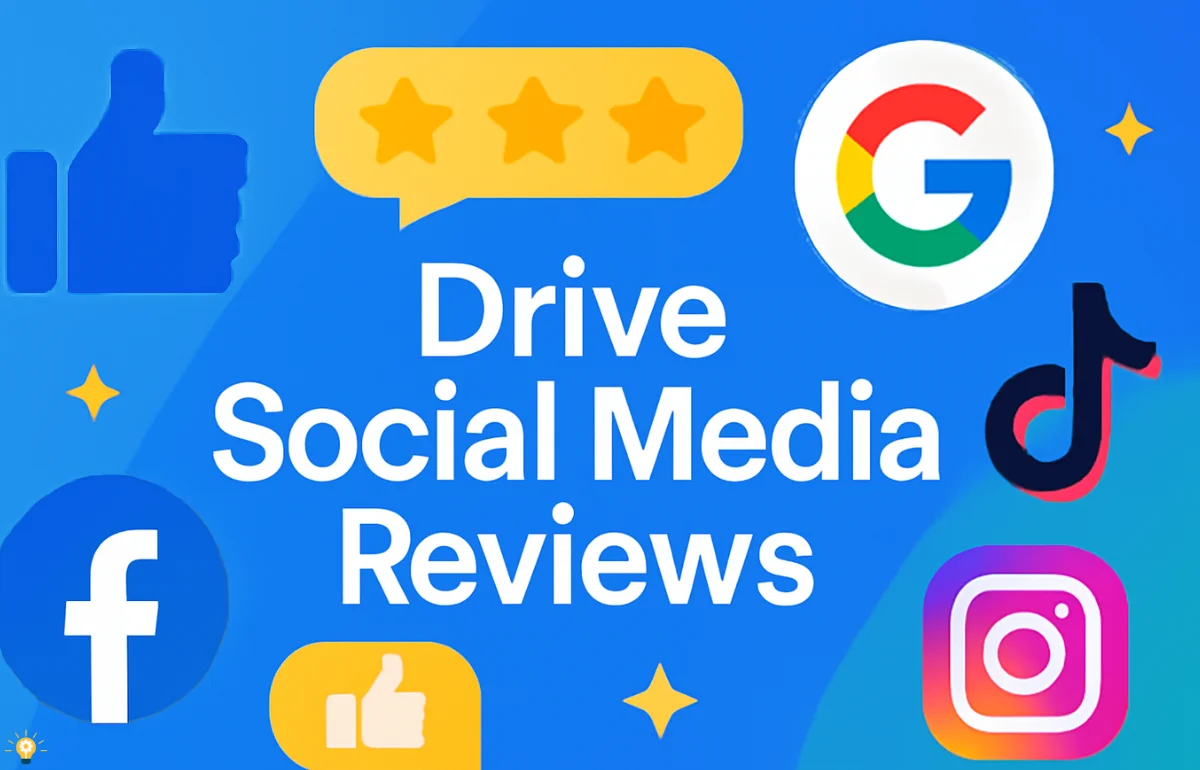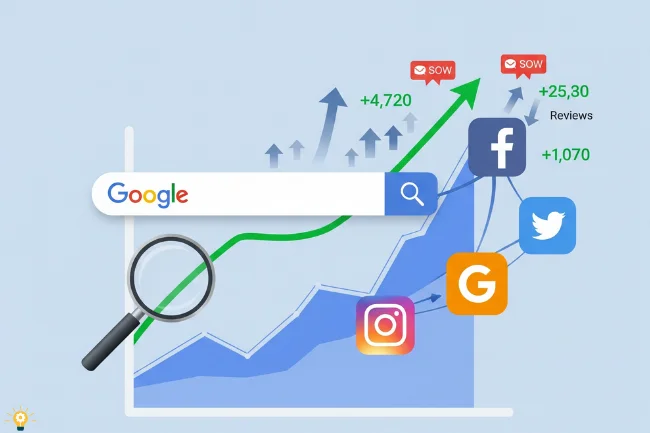In today’s digital-first world, businesses that consistently drive social media reviews stand out—not just in the eyes of potential customers, but also in search engine rankings. But generating reviews isn’t just about asking politely. It’s about understanding human psychology, leveraging technology, and creating customer experiences that naturally compel people to speak up.
This article breaks down how businesses can strategically drive more social media reviews, enhance trust, boost visibility, and strengthen customer loyalty.
The Psychology Behind Why People Leave Reviews
Before you can encourage customers to leave reviews, you need to understand what motivates them. Research from Spiegel Research Center and BrightLocal reveals that 84% of people trust online reviews as much as personal recommendations. Why do customers choose to dedicate their time to writing reviews?
Core Psychological Triggers
1. Emotional Expression
Customers often feel compelled to share strong emotions, whether joy from excellent service or frustration from a poor experience. Reviews become a form of emotional release.
2. Altruism
Many reviewers genuinely want to help others make informed decisions. If they found value in your service, they want others to benefit too.
3. A Sense of Belonging
Participating in public feedback gives consumers a voice. They feel heard and connected to a broader community of fellow buyers.
These motivations form the foundation of a strategic review generation system.
Proven Strategies to Drive Social Media Reviews
Turning customer intent into public feedback requires timing, automation, and personalization. Below are strategies rooted in behavioral science and real-world marketing success.
Optimize the Customer Journey
Your first job is to identify moments when customers are most satisfied—post-purchase, after issue resolution, or during loyalty milestones. These are the peak emotional points where asking for reviews is most effective.
| Key Moment | Why It Works |
|---|---|
| After purchase | Emotions are high; the experience is fresh |
| Post-resolution | Customers feel heard and appreciated |
| Upon loyalty achievement | Builds on positive sentiment and brand trust |
Personalize the Ask
Generic requests often go ignored. Instead, tailor your message to match the experience. For instance:
-
“Glad we solved your issue! Would you be willing to share your experience on our Facebook page?
-
“Thanks for your order! Loved your experience? A short review on Instagram would be greatly appreciated!
Use AI and Automation Tools
Manual review collection doesn’t scale. AI-powered platforms like Birdeye Social AI simplify and personalize review requests through:
-
Smart timing suggestions
-
Platform-specific prompts (e.g., Google, Facebook, Instagram)
-
Follow-up reminders
This ensures that you consistently reach the right customer at the right moment with the right message.
According to Birdeye’s State of Online Reviews 2025, reviews with comments rose from 79% to 81%, indicating that users are increasingly willing to provide thoughtful, content-rich feedback when approached correctly.
How Social Media Reviews Influence Local SEO
Beyond trust and social proof, reviews play a massive role in your business’s online discoverability. Local SEO now goes beyond just having a Google Business Profile; it’s influenced by customer reviews and where they are shared.
SEO Benefits of Driving Social Media Reviews
-
Improved keyword relevance: When customers mention services, locations, or products, search engines better understand your offerings.
-
Higher engagement metrics: Responding to and sharing reviews boosts visibility and keeps your page active.
-
Better click-through rates (CTR): Businesses with recent, high-quality reviews receive more clicks from search results.
Local SEO Review Best Practices
-
Ask customers to mention location names (e.g., “Best plumber in Houston!”)
-
Keep your business info (NAP: Name, Address, Phone) consistent across platforms
-
Respond to every review, positive or negative
According to research from Harvard Business Review, companies that engage with reviews see a 12% boost in customer interaction.
The Role of Review Responses
Think of every review as the beginning of a public conversation. Whether glowing or critical, your reply is your chance to humanize your brand.
-
Acknowledging praise encourages others to share
-
Responding to criticism shows professionalism and care
-
Consistent engagement signals to algorithms (and users) that you’re an active, trustworthy business
Sample Review Response Template
Positive Review
“Thanks so much for your kind words, [Name]! It’s wonderful to hear you had a positive experience, and we’re grateful for your feedback.
Negative Review
“We’re sorry to hear this, [Name], and truly value your feedback. We’ve reached out to resolve the issue and hope to earn your trust back.”
Leveraging Visual Reviews for Maximum Impact
Social platforms like Instagram, TikTok, and Facebook Stories thrive on visual storytelling. Encourage customers to post videos, photos, or reels tagging your brand. These reviews generate:
-
Higher engagement
-
Organic shares
-
Increased authenticity
You can reshare them with a CTA like:
“Have a similar experience? Share your moment with us!”
Train Your Team to Drive Social Media Reviews
Your frontline staff are your most powerful review drivers. Train them to:
-
Identify satisfied customers in real-time
-
Use friendly prompts to request reviews
-
Provide QR codes or direct links to simplify the process
A small investment in training leads to a compounding effect on review volume and quality.
FAQs About Driving Social Media Reviews
1. Why are social media reviews important for small businesses?
Social media reviews build trust with new customers, improve visibility on platforms like Google and Facebook, and boost local SEO rankings.
2. Can I offer incentives for leaving reviews?
You can express gratitude, but platforms like Google and Yelp prohibit offering rewards for positive reviews. Stick to thanking customers for their time, regardless of sentiment.
3. What’s the best time to ask for a review?
Immediately after a purchase, support resolution, or during loyalty events, when the customer’s experience is top-of-mind and emotionally resonant.
4. Should I respond to negative reviews?
A professional response to negative comments highlights your commitment to addressing concerns and improving. It also builds public trust.
5. Which platforms matter most?
Focus on Google Business Profile, Facebook, and Instagram for maximum reach and impact.
Conclusion: Make Reviews a Core Growth Strategy
To truly drive social media reviews, you must go beyond basic requests. Tap into the psychology of your customers, use the right tools like Birdeye Social AI, and treat each review as a relational opportunity, not a transaction.
When done right, social media reviews don’t just reflect your business—they shape its reputation, increase local visibility, and build the trust needed to grow sustainably.
Ready to see more reviews coming in? Start by mapping your customer journey, training your team, and letting AI tools handle the heavy lifting.

Salman Khayam is a business consultant at Siam IT Solutions, specializing in digital marketing, PPC, SEO, web development, e-commerce, and email marketing. He designs custom strategies that deliver measurable success.



